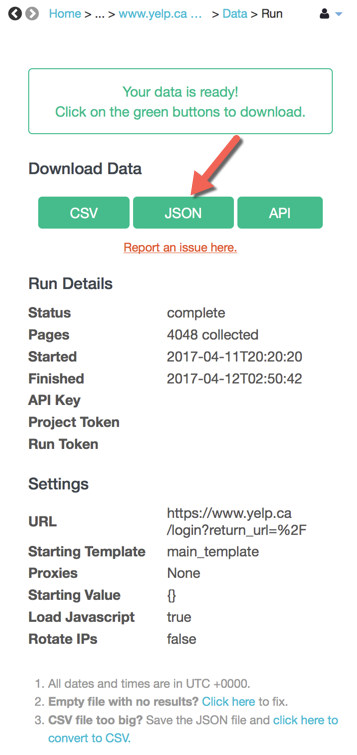


The key feature that JSONify It has - aside from a much friendlier UI than most other converters - is the unique ability to generate nested JSON files. Why this converter?Ĭurrently, there are a number of CSV to JSON converters lying around on the internet for people to use, and most of them work more or less as expected. Typically this need will arise because the data you receive or collect will be in the more human-friendly format of a spreadsheet. In this case, it is often far simpler to do a one time conversion, using a tool like JSONify It, than to create a script to parse the data from a CSV or other static file.įor those who have some experience in creating visualizations, particularly online visualizations using JavaScript and libraries such as D3.js or Highcharts, one thing that you will often come across is the need to convert your data into JSON. In many cases the data will be a small static dataset that is unlikely to change regularly. TSV) will be required to generate some output. Oftentimes in programming, data in a tabular source such as an Excel spreadsheet, Google Sheet, CSV file, or some other form of delimited file (e.g. The strength of JSON is its flexibility, allowing for a given dataset to be stored in a variety of different ways, ensuring that the minimum reworking of the data is required given an expected use case for that data. This format of data representation is used primarily in programming, and is a default datatype in most programming languages (although they can be called different things - i.e. This blog presented multiple methods to convert CSV to JSON string using numerous examples.JSON, or JavaScript Object Notation, is a format of data storage that utilizes key-value (or attribute-value) pairs to represent data. Similarly, the “ csv.DictReader()” function of the CSV module is used along with the “ json.dumps()” function to convert the CSV to JSON string. The “ df.to_json()” function is used along with the “ pd.read_csv()” function to read and convert CSV to JSON string. The “df.to_json()” function of the Pandas module and the CSV module, along with the JSON module, is used to convert the CSV to JSON string in Python. The CSV file has been converted into a JSON string.

The “for loop” iterates over the rows of the reader object and assigns each row to the variable named “rows”.The “csv.DictReader()” is used to read each row of the CSV file as a dictionary with column names as keys.The “with open()” function is used to open the CSV file in “r” reading mode.The empty dictionary is assigned to a variable named “data”.The “csv” and “json” modules are imported at the start using the “import” keyword.


 0 kommentar(er)
0 kommentar(er)
